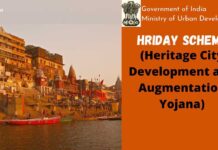Cultural Fusion
In the vibrant art scene of Delhi, a remarkable exhibition is poised to captivate audiences with its unique blend of cultural narratives and artistic innovation. Audronė Brazauskaitė, an artist and art therapist from Lithuania, is set to showcase her latest series of paper works, which offer a profound exploration of cultural influences and personal expression. This exhibition promises to be a testament to the transformative power of art in bridging diverse cultural experiences and personal introspections.
The Artist’s Journey
Audronė Brazauskaitė is known for her distinctive approach to art that seamlessly integrates therapeutic principles with artistic creativity. Her background as an art therapist informs her work, allowing her to explore and communicate complex emotions and cultural identities through her art. Brazauskaitė’s practice is deeply rooted in the idea that art can be a powerful tool for personal and collective healing, and her paper works are a manifestation of this belief.
Born and raised in Lithuania, Brazauskaitė’s early experiences and cultural heritage have significantly influenced her artistic vision. Lithuania’s rich traditions, folklore, and the natural landscape have provided a wellspring of inspiration. However, her artistic journey took a transformative turn when she began to engage with Indian culture. The cross-cultural exchange has allowed her to incorporate Indian motifs, philosophies, and aesthetics into her work, resulting in a unique fusion that reflects both her Lithuanian roots and her engagement with Indian culture.
The Paper Works: A Fusion of Cultures
Brazauskaitė’s exhibition in Delhi is a celebration of this cross-cultural dialogue, manifested through her paper works. Paper, as a medium, holds a special place in her practice. It is both a canvas and a symbol of transformation, offering a delicate yet resilient surface on which to explore and express her themes.
1. Lithuanian Influences: Tradition and Nature
Lithuanian culture is characterized by its deep connection to nature, folklore, and intricate patterns. Brazauskaitė’s Lithuanian heritage is evident in her use of traditional motifs and natural elements in her paper works. Her pieces often incorporate delicate, hand-cut patterns reminiscent of traditional Lithuanian paper-cutting techniques known as “karpinių.” These intricate designs, combined with organic forms and textures, evoke the natural beauty of Lithuania’s landscapes and the spiritual connection to its folklore.
The use of paper in these works allows Brazauskaitė to explore themes of fragility and resilience. The paper’s translucency and texture become metaphors for the delicate balance between tradition and transformation. Through layering and deconstruction, she creates dynamic compositions that reflect the interplay between the familiar and the unfamiliar, the static and the fluid.
2. Indian Influences: Spirituality and Aesthetics
The Indian component of Brazauskaitė’s work introduces a rich tapestry of color, symbolism, and spirituality. Indian art and culture, with its vibrant hues and intricate patterns, contrast with the more subdued palette of her Lithuanian influences, creating a visually striking juxtaposition. Elements such as mandalas, henna patterns, and motifs inspired by Indian textiles can be seen in her works, contributing to a dialogue between Eastern and Western aesthetics.
Incorporating Indian themes allows Brazauskaitė to explore spiritual and philosophical concepts through her art. The mandala, for instance, represents unity and wholeness, themes that resonate with the therapeutic aspect of her practice. The meditative quality of these patterns invites viewers to engage in a contemplative experience, bridging the gap between visual pleasure and introspective insight.
Art as Therapy: A Personal and Universal Journey
One of the most compelling aspects of Brazauskaitė’s work is its dual role as both art and therapy. Her paper works are not merely visual objects but also represent a form of personal and collective healing. As an art therapist, Brazauskaitė understands the transformative potential of creative expression. Her art often explores themes of identity, emotion, and cultural integration, providing a reflective space for both the artist and the audience.
In the context of the exhibition, Brazauskaitė’s paper works invite viewers to engage with their own cultural identities and emotional landscapes. The delicate interplay of Lithuanian and Indian elements encourages a deeper understanding of how cultural experiences shape our perceptions and inner worlds. By presenting her work in Delhi, Brazauskaitė creates a space for cross-cultural dialogue and mutual appreciation, fostering a sense of connection and empathy among diverse audiences.
Exhibition Impact and Reception
The Delhi exhibition is not only a showcase of Brazauskaitė’s artistic achievements but also an opportunity for cultural exchange and dialogue. Delhi, with its rich artistic heritage and vibrant contemporary scene, provides an ideal backdrop for exploring the intersection of Lithuanian and Indian influences. The city’s diverse audience will have the chance to engage with Brazauskaitė’s work on multiple levels, from its aesthetic qualities to its cultural and therapeutic dimensions.
The reception of the exhibition is likely to be marked by a sense of wonder and reflection. Viewers will encounter a visually captivating display of paper works that challenge and expand their understanding of cultural integration. The opportunity to experience Brazauskaitė’s unique artistic voice in the context of Delhi’s cultural landscape will undoubtedly lead to meaningful conversations and connections.
Conclusion
Audronė Brazauskaitė’s exhibition in Delhi represents a fascinating convergence of cultural influences and artistic expression. Her paper works, enriched by Lithuanian traditions and Indian aesthetics, offer a unique perspective on the possibilities of cross-cultural dialogue and personal reflection. Through her art, Brazauskaitė not only bridges the gap between two distinct cultural worlds but also creates a space for viewers to explore their own cultural identities and emotional landscapes. As Delhi welcomes her work, the exhibition stands as a testament to the universal power of art to inspire, heal, and connect us across boundaries.





























